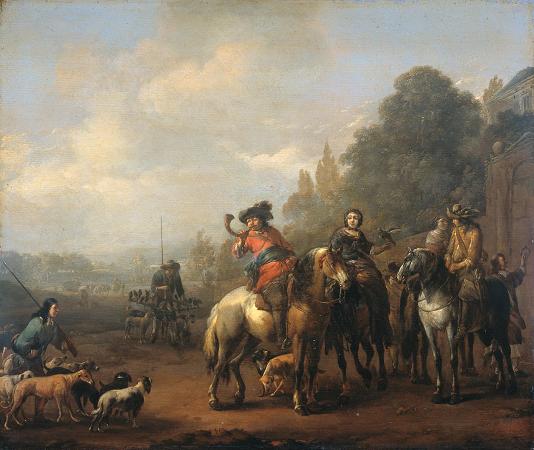Bamboccianti. The Bamboccianti were genre painters active in Rome from about 1625 until the end of the seventeenth century. Most were Dutch and Flemish artists who brought existing traditions of depicting peasant subjects from sixteenth-century Netherlandish art with them to Italy, and generally created small cabinet paintings or etchings of the everyday life of the lower classes in Rome and its countryside. Typical subjects include food and beverage sellers, farmers and milkmaids at work, soldiers at rest and play, and beggars, or, as Salvator Rosa lamented in the mid-seventeenth century, rogues, cheats, pickpockets, bands of drunks and gluttons, scabby tobacconists, barbers, and other 'sordid' subjects. Despite their lowly subject matter, the works found appreciation among elite collectors and fetched high prices. Many of the artists associated with the Bamboccianti were members of the Bentvueghels, an informal association of mainly Dutch and Flemish artists in Rome. It was customary for the Bentvueghels to adopt an appealing nickname, the so-called 'bent name'. The bent name of the Dutch painter Pieter van Laer was Il Bamboccio, which means ugly doll or puppet. This was an allusion to van Laer's ungainly proportions. Van Laer is regarded as the initiator of the Bamboccianti style of genre painting and his nickname gave the genre and the group of artists its collective name. He became the inspiration and focal point around which likeminded artists congregated during his stay in Italy. The initial Bamboccianti included Andries and Jan Both, Karel Dujardin, Jan Miel, Johannes Lingelbach and the Italian Michelangelo Cerquozzi. Sebastien Bourdon was also associated with this group during his early career. Other Bamboccianti include Michiel Sweerts, Thomas Wijck, Dirck Helmbreker, Jan Asselyn, Anton Goubau, Willem Reuter, and Jacob van Staverden. The Bamboccianti influenced Rococo artists such as Domenico Olivieri, Antonio Cifrondi, Pietro Longhi, Giuseppe Maria Crespi, Giacomo Ceruti, and Alessandro Magnasco. Their paintings of everyday Roman life continued into the nineteenth century through the works of Bartolomeo and Achille Pinelli, Andrea Locatelli and Paolo Monaldi. A Bambocciante not yet identified painted also an Assalto d'armati, now in the Forli Pinacoteca Civica. Giovanni Battista Passeri, a seventeenth-century chronicler of art, described van Laer's work as an open window that provides an accurate representation of the world around him, characteristics applied to the Bamboccianti in general: era singular nel represetar la verita schietta, e pura nell'esser suo, che li suoi quadri parevano una finestra aperta pe le quale fussero veduti quelli suoi successi; senza alcun divario, et alterazione. was unique in representing the truth, in its pure essence, such that his paintings appear to us like an open window through which we can see all that happens, without difference or alteration Passeri expressed here the traditional art historical view that the Bamboccianti paintings offered a realisttrue portrait of Rome and its popular life without variation or alteration of what the artist sees. However, their contemporaries did not generally regard the Bamboccianti as realists. An alternative view of the art of the Bamboccianti is that their works should rather be seen as complex allegories which are a commentary on classical art with a view to bringing the observer to contemplate elevated ideas. They thus stand in a long tradition of paradox in which low or vulgar subjects were the vehicle for conveying important philosophical meanings. For instance, the Bamboccianti regularly made paintings of gigantic limekilns outside Rome. These limekilns used the marble and travertine blocks of the Roman antique ruins as raw material and thus played a direct role in the destruction of Rome's ancient monuments. The limekilns themselves are painted in a grandiose way as if they were the new monuments of Rome. The kilns created something new from the ruins of ancient Rome and the lime they produced was used in the construction of new monuments in Rome. The paintings of these limekilns can therefore be read as a reflection on the transience of glory as well as the regenerative power of Rome. In other words, these paintings were intended to be read ironically and allegorically and not as exact, realist depictions of life in Rome. During the 1640s and 1650s Jan Miel and Michelangelo Cerquozzi started to expand the scope of Bamboccianti compositions by paying more attention to the surrounding landscape and emphasising less the anecdotal aspects of city and country life.
more...




